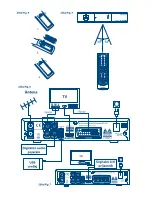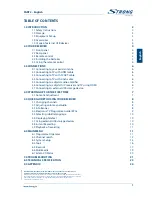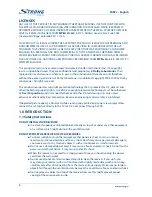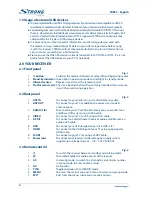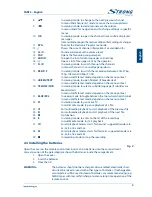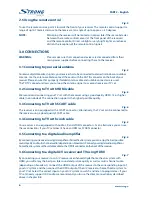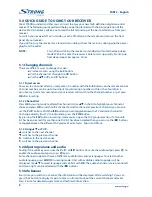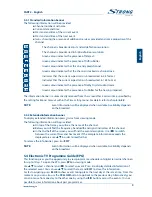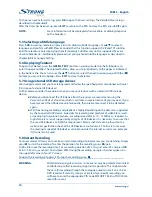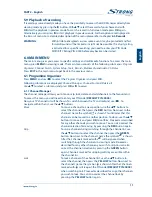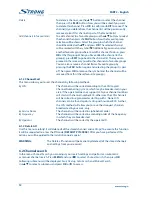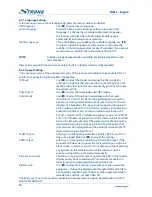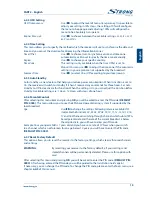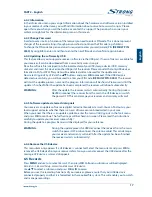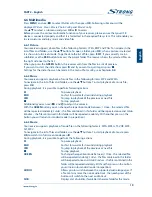
PART 2 • English
4
1.5 Usage of external Usb devices
It is recommended to use USB 2.0 storage devices. If your device is not compatible to USB 2.0
specifications, recording and multimedia functions of your receiver would not work properly.
For recording please ensure that the USB device is already formatted to FAT/FAT32. If this is not
the case, please format the USB device via your receiver. For details please refer to chapter <6.5.3
Format >.Only for the multimedia functions NTFS is supported. STRONG cannot guarantee
compatibility to all types of USB storage devices.
It is advised not to store important information on USB storage devices used with
the receiver. Always make backups of data on your USB storage device before using
it with this receiver. STRONG will not take responsibility for any loss of information or
circumstances caused by loss of information.
Please ensure that the USB device is already formatted to FAT/FAT32 or NTFS. If it is not,
please format the USB device via your PC or notebook.
2.0 YoUR RECEIvER
2.1 front panel
Fig. 1
1.
q
button:
Switches the receiver between standby (off) and operating mode.
2.
stand-by indicator:
Green light in operating mode and red light in standby mode.
3.
Infrared sensor:
Receives signals from the remote control.
4.
slot for smart card:
The slot is behind the front flap and only intended for service use,
it won’t be used during operation.
2.2 Rear panel
Fig. 2
1.
AnT In
To connect to your aerial using a standard antenna cable.
2.
AnT oUT
To connect to your TV or additional receiver via a standard
antenna cable.
3.
AUDIo (l/R)
To connect to your TV or VCR, alternatively you can connect to an
amplifier or HIFI system using an RCA cable.
4.
vIDEo
To connect to your TV or VCR using an RCA cable.
5.
s/PDIf
To connect to a digital home theatre or audio amplifier with an
audio cinch cable.
6.
Usb
To connect your USB storage device (stick, HDD, etc.)
7.
hDmI
To connect to the HDMI input of your TV using a good quality
HDMI cable.
8.
sCART
To connect to your TV set using a SCART cable.
9.
Power cord
To connect your receiver to the local power supply system,
supporting a voltage range of ~ 100 – 240 V 50/60 Hz.
2.3 Remote control
Fig. 3
1.
q
To switch the receiver between standby and working mode
2.
!
To disable/enable the audio outputs of the receiver.
3.
0-9
In viewing mode: to switch to a channel by entering its number
In menu mode: to enter numeric values
4.
Av
No function
5.
Tv/R
Toggles between TV and RADIO mode
6.
mEnU
To access the main menu and in menu to return to viewing mode
7.
ExIT
Exits from the menu, sub-menu or cancels actions
Summary of Contents for SRT 8526
Page 2: ......
Page 3: ......
Page 29: ...PART 2 English 26 ...
Page 30: ...PART 2 English 27 English ...
Page 31: ...PART 2 English 28 ...



